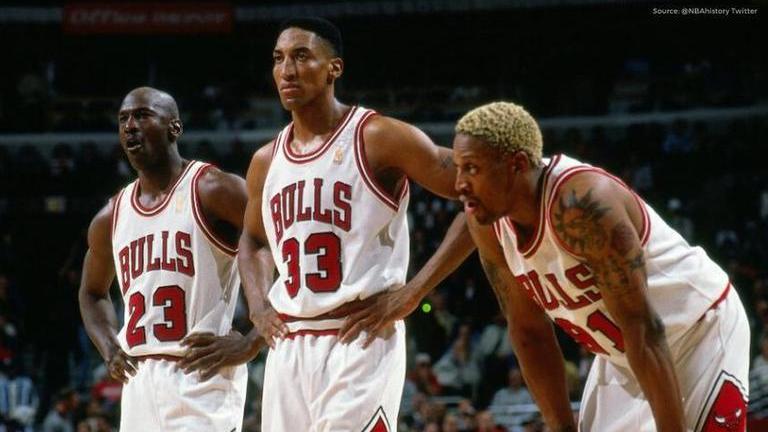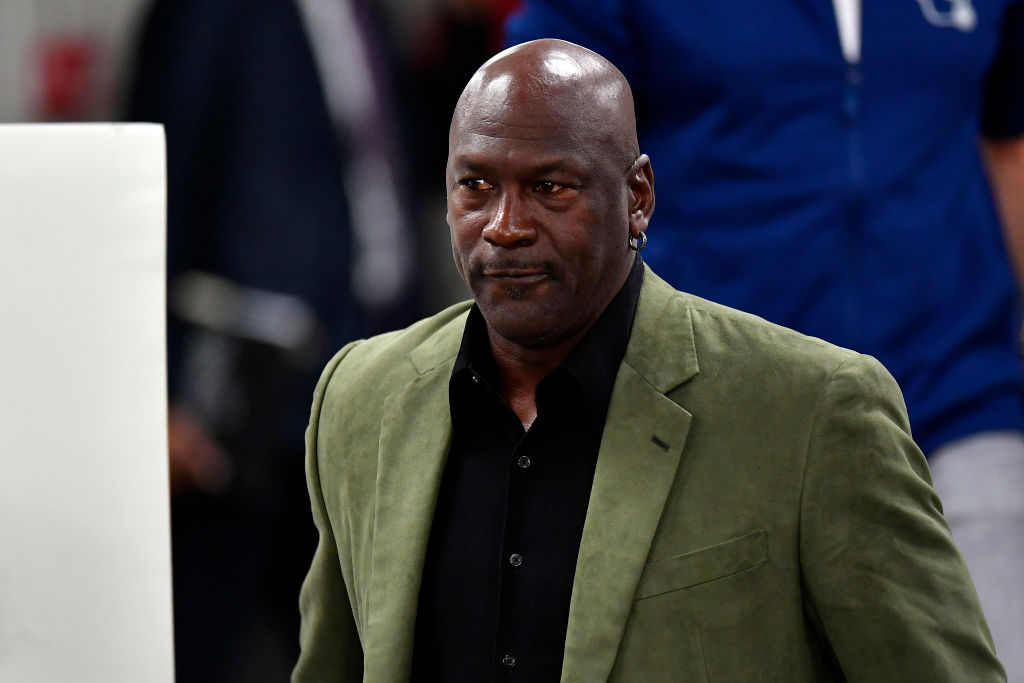Jordan and Pippen picked up players 3/4 court in their athletic primes. Pippen with the crazy wingspan and inch in height had the advantage....but they both could sit in the chair and make it difficult for players.
People couldn't really reach and teach Jordan...he could bait players into mistakes.
There's a long extended look at his defense over his career.
TLDR: For his first 3 years he was an unpolished risk-taker who wasn't particularly impressive on defense, then in his 4th/5th years he became a defensive monster who was dominant in a variety of ways though still making mistakes at a high rate due to his risk taking. From 1990-1993 he backed off the crazy defensive pace significantly to conserve energy and let other players take the load, but could still be dangerous when he picked his spots. In the 2nd threepeat he didn't have the athleticism anymore and still was conserving energy on the defensive end, but made up for it with improved awareness.
Overall, he was an elite impact for a wing defender (35th all-time on his rankings) but because he wasn't a rim-protector in the paint and couldn't check big men, he didn't have the top-level defensive impact of elite centers or more versatile defenders like Pippen and LeBron:
Thinking Basketball
backpicks.com
"On defense, he entered the league as an unpolished risk-taker. His footwork wasn’t sharp and he constantly gambled for steals, like this"
He loved to snipe the post, sneaking away from his man for a steal, then leaking out in transition. Only, he whiffed a lot:
His rotations to the rim were soft, often avoiding contact and rarely dissuading the shot. His on-ball defense wasn’t anything to write home about in those first few years either:
But then, in the summer of 1987, he sprinkled fairy dust on himself and magically learned to defend. While his man D improved a bit in his third year, it leapt forward in his fourth (1988). He curtailed his habit of leaking out for steals — probably a factor in his defensive rebounding spike that year — and many of his silly gambles were replaced with highly-attentive rotations, laser-focused steal attempts and even some rim protection:
is reactions were sharper, his reads smarter and his motor revved up higher than any other season, save for 1989. He also improved his footwork on the ball, where he would often lockdown opposing point guards. In the following play, notice how he uses his size and textbook positioning to slow down Isiah’s drive into the lane. In the second clip, he clinically hedges around a screen before his trademark swipe leads to a turnover:
But his style was still high-risk, high-reward, and his defensive error rates were on the high side, landing in the 17th percentile for the heart of his career. His highlights are impressive, but he bled value at times.
For instance, in the 1991 Finals, Jordan slowed the Magic Johnson train by picking him up in the backcourt, preventing him from building a head of steam. In the low-post, Chicago constantly doubled Magic, and although Jordan did a solid job bodying him up at times, he also struck out on a number of steal attempts:
His transition awareness could be a problem, misjudging threats in front of and behind him:
Like nearly every guard, he was too small to check bigs, limiting some of his impact when compared to more versatile defenders like Pippen or LeBron. He was never a vertical paint defender, instead swiping for steals with his ginormous mitts while his teammates challenged shots up high. Yet his cobra-like strikes obliterated plays when they worked:
His sneak-attacks generated six of the top-200 steal percentages ever recorded, but his gambling style exposed the Bulls at times. He’s so jazzed to intercept this outlet that he bites at the mere sight of a pass:
At other times, his bets led to huge payoffs — his ambush blocks could blow up possessions, and he often played the pass in odd-man fast breaks, baiting challengers like a basketball Jedi. This isn’t the layup you’re looking for:
In 1990, his motor slowed from the fever pitch he had played at for two years, and his defensive involvement tapered down a bit. He idled more, resting his engines to conserve fuel. Although, on possessions where he went full throttle, he made ball-denial an art, navigating screens (a strength of his) and shutting off passing lanes:
During the second three-peat, he swapped athleticism for guile, relying on added strength to grind through picks or to stake valuable position. Here, he completely kills Orlando’s idea of a cross-screen into a post-up, flaming out the entire possession:
He liked to linger in the lane and help against penetration, but improved awareness made this tactic more efficient — notice how he immediately locates the ball as he passes through the paint, de-prioritizing his own cover (Chris Mullin) to shut off a dribbling threat:
..
Consistent with his drawbacks on tape, there’s little evidence that Jordan’s defense moved the needle like a titanic big man. His defensive plus-minus values from ’97 and ’98 were both strong for a wing — around 35th among scaled four-year peaks, next to Bruce Bowen — but given his post-retirement defensive prowess, I consider it unlikely that his earlier years were much more impactful"





 Until you young nggas got old enough to get on the net ngga EVERYBODY was a Jordan fan
Until you young nggas got old enough to get on the net ngga EVERYBODY was a Jordan fan










